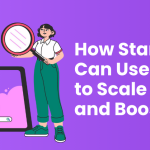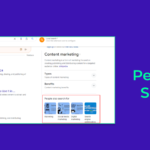Table Of Content
- 1 How To Create A Blog In 2023? – 10 Steps To Follow
- 1.1 Step 1 – Niche Identification
- 1.2 Step 2 – Brainstorming Blog Name
- 1.3 Step 3 – Blogger Or WordPress?
- 1.4 Step 4 – Getting A Hosting And Domain
- 1.5 Step 5 – Designing Your Blog And Personalizing It
- 1.6 Step 6 – Understand Your Target Audience
- 1.7 Step 7 – Keyword Research For Your Blog
- 1.8 Step 8 – Writing Your First Blog
- 1.9 Step 9 – Optimize Your Blog For Search Engine
- 1.10 Step 10 – Promoting Your Blog
- 2 Over To You!
As a leading digital marketing agency, we’ve been blogging for a long time and have seen almost every blogging issue.
Starting your blog, getting traffic, and making money is one of the hardest things most people need help to do.
Things have changed over the years, and it’s more important than ever to start your blog the correct way and lay a solid foundation for future blogging success.
Blogging is a powerful way to succeed with various objectives, from publicizing a business to sharing opinions on a specific subject or simply expressing yourself.
It’s important for individuals and businesses to connect with their target audience and engagingly interact with them.
But please remember that the ultimate key to your blogging success is action. The most successful bloggers are the ones who do a whole lot more than they research.
So are you ready to take action and thrive in this blogging industry?
Now the question might come to your mind – how to create a blog?
This is precisely the objective of this article. To help you comprehend what constitutes successful blogging and how to become a successful blogger.
So without further ado, let’s get started.
Know More: Top 30 Benefits Of SEO For Your Small Business In 2023?
How To Create A Blog In 2023? – 10 Steps To Follow
Blogging opens the door to lucrative avenues for those who follow a process. If you want to skyrocket your blogging efforts, here are 10 steps that you can bank upon.
Step 1 – Niche Identification

How to promote your blog? Discuss in detail.
If you’re looking for a solution to how to create a blog, before starting, you need to identify a niche for your blog. This can be a daunting task, but with the right approach, you can easily find a niche that suits your interests and goals.
(i) Aligns With Your Interest
The first step in identifying a niche for your blog is to consider what topics you’re passionate about. What do you enjoy talking about? What topics do you know a lot about? What topics are you interested in learning more about? Once you’ve identified some potential topics, you can start researching them to see if they have an audience.
(ii) Research Potential Topics
You can use search engines and social media to research potential topics. Look for blogs, forums, and other websites that discuss the topics you’re interested in. See what kind of content they produce and how much engagement they get. Identify if there’s an audience for the topic and how competitive the niche is.
(iii) Narrowing Down The Topics
Once you’ve identified a few potential topics, you can start narrowing down your choices. First, consider what makes your blog unique and how to differentiate it from other blogs in the same niche. Next, consider the type of content you want to produce and how you can make it stand out.
(iv) Scope For Monetisation?
Finally, it would help if you also thought about the potential for monetization. Can you make money from your blog? If so, how? Research potential monetization strategies and decide which ones make the most sense for your blog.
Step 2 – Brainstorming Blog Name

Thinking about how to create a blog? Picking up a blog name is your second step.
Your blog name will be the first thing people see when they come across your blog, so it’s important to choose something that reflects your blog’s purpose and personality.
Here are some tips for picking up a blog name for starting your blog.
(i) Brainstorm
Before you start searching for a blog name, it’s important to brainstorm potential names. Think about your blog and what you want to convey with your blog name. Write down any ideas that come to mind, even if they don’t seem to work. You can also use a thesaurus to develop related words that could work as a blog name.
(ii) Keep It Simple
When it comes to blog names, simpler is usually better. Try to pick a name that’s easy to remember and spell. Avoid using numbers, hyphens, and other special characters.
(iii) Check Availability
Once you’ve come up with some potential blog names, it’s important to check if they’re available. First, you’ll need to ensure the domain name and social media handles are available. Next, you’ll need to develop a different theme for the already existing themes.
(iv) Consider Your Audience
When picking a blog name, it’s important to consider your audience. Your blog name should be something that resonates with your target audience. Think about what words and phrases your audience might be searching for and use those in your blog name.
(v) Make It Unique
It’s important to pick a unique blog name that stands out from the crowd. Also, try to avoid generic words and phrases.
Step 3 – Blogger Or WordPress?
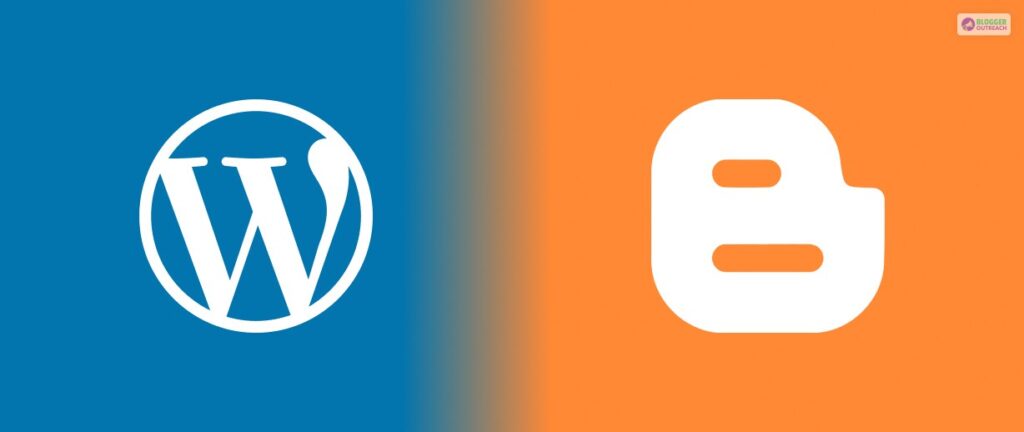
If you’re wondering how to create a blog, you’ve likely heard of two of the most popular blogging platforms: Blogger and WordPress.
Both offer a great way to get your blog up and running, but there are some key differences between the two that you should consider before making your decision.
Blogger is a free platform that Google owns. It’s great for those who are just starting and don’t have much technical knowledge. It’s also a great choice if you’re looking for a simple, no-frills blog. The downside is that you don’t have as much control over the design and customization of your blog as you would with WordPress.
WordPress is a more powerful platform than blogger. It’s great for those who want more control over their blog’s design and features. It also offers a wide range of plugins and themes to customize your blog. The downside is that it can be more expensive and time-consuming to set up and maintain.
When deciding between Blogger and WordPress, you must consider your needs and budget. If you’re starting and don’t have a budget, Blogger is a great choice. On the other hand, wordPress is the way to go if you’re looking for more control over the design and features of your blog.
Blogger doesn’t come with premium themes. But if you’re going with WordPress, you will get premium themes to personalize your website.
Step 4 – Getting A Hosting And Domain
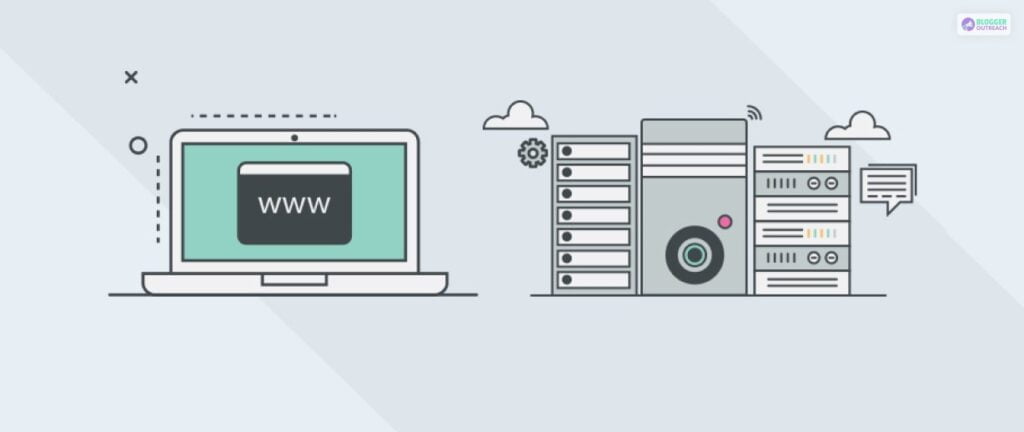
Choosing the right hosting and domain can make a difference between a successful blog and one that needs to gain traction.
When selecting a hosting provider, it’s important to consider the hosting you need. Shared hosting is usually the most cost-effective option if you’re starting. Shared hosting is when multiple websites are hosted on the same server, which can help keep costs down.
However, consider a dedicated server or a virtual private server (VPS) if you expect a lot of traffic.
You’ll also want to consider the features offered by the hosting provider. Look for features such as unlimited bandwidth, storage, and email accounts. You’ll also want to ensure the hosting provider offers reliable customer service and technical support.
When selecting a domain name, you’ll want to choose something that is easy to remember and reflects your blog’s content. You’ll also want to make sure the domain name is available. Using a domain name search tool, check the availability of the domain.
Your quest to know ‘how to create a blog’ gets momentum when you get hosting and a domain. By taking the time to research your options and select the right hosting and domain name, you’ll be setting yourself up for success.
Step 5 – Designing Your Blog And Personalizing It
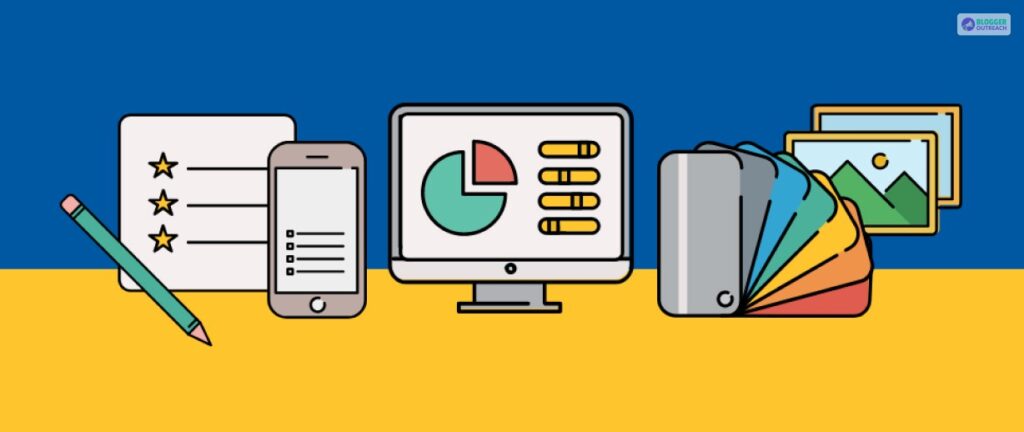
How to create a blog design? How to create a customized blog?
Before you start writing and sharing your content, you must design your blog and personalize it.
(i) Template
The first step in designing your blog is choosing a template. You can avail of any free and paid templates available online, so you should be able to find one that fits your needs.
When choosing a template, consider the overall look and feel of the design and the features it offers.
Make sure the template is easy to customize and has the needed parts, such as a contact form, social media integration, and a comment system.
(ii) Decide Which Pages to Include
Once you’ve chosen a template, you’ll need to decide which pages to include on your blog. The most common pages are the home page, about page, contact page, and blog page.
You may also want a portfolio page, a resources page, and a services page. Think about what content you want to share and which pages will be the most helpful for your readers.
(iii) Get Indexed on Search Engines
Once you’ve designed your blog, you’ll want to ensure it for search engines. This is because it enables people to find your blog when they search for related topics. To get indexed, you’ll need to submit your blog’s URL to the major search engines, such as Google and Bing.
(iv) Blog Logo
Finally, you’ll want to create a logo for your blog. This will help give your blog a professional look and make it easier for people to recognize your brand. Think of doing the logo by yourself or hire a designer to do it for you.
Step 6 – Understand Your Target Audience

Knowing who you are writing for can help create content that resonates with your readers and keeps them coming back for more.
Getting the answer to ‘how to create a blog’ becomes easy when you know your target audience.
Consider Factors Such As:
- Age
- Gender
- Location
- Interests
- Occupation
- Pain points
You can also look at the type of content they are likely to be interested in. For example, if you are writing about health and wellness, your target audience may be people interested in health and fitness.
Once you have identified your target audience, you can start to create content that appeals to them. Think about the topics they are likely interested in and their language use. You can also look at the type of content they are likely to consume, such as blog posts, videos, or podcasts.
How will you reach your target audience? Consider the platforms they are likely to use, such as social media, email, or search engines. You can also look at the type of content they are likely to engage with, such as blog posts, videos, or podcasts.
Step 7 – Keyword Research For Your Blog
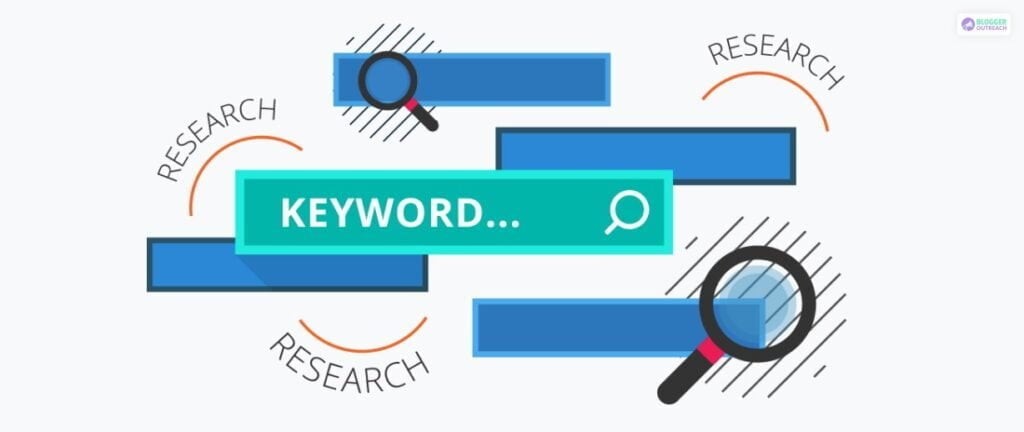
By understanding what keywords people are using, you can create content that is more likely to be found by potential readers.
The first step in keyword research is to brainstorm a list of topics related to your blog. Think about what topics you want to write about and what words and phrases people might use when searching for content related to those topics. Once you have a list of topics, you can start to look for keywords related to those topics.
You can leverage tools for keyword research. Google’s Keyword Planner is a great tool for finding keywords related to your topics. You can also use other tools, such as SEMrush and Ahrefs, to find related keywords.
Post analyzing the list of keywords; you can start to analyze them. Look at the search volume for each keyword to determine which ones are most popular. You can also look at the competition for each keyword to determine how difficult it will be to rank for that keyword.
By performing keyword research, you can create content that is more likely to get traffic to your blog and increase your chances of success.
Step 8 – Writing Your First Blog

Imagine you may have a lot of ideas but need to know how to get them down on paper. Writing your first blog is a structured effort!
(i) Outline
The first step is to create an outline of your blog post. This will help you organize your thoughts and cover all the important points.
Start by writing down the main points you want to cover in your post. Then, break each point down into smaller sections. This will help you create a logical flow for your post.
(ii) Title
Search engine result page comes with a plethora of blogs to choose from. And it is challenging to stand out among plenty of blogs.
This is why writing a catchy title helps hook users’ attention. In addition, the title with figures performs better—for example – ‘5 ways’, ’10 hacks’, etc.
(iii) Introduction
Start by introducing the topic and giving a brief overview of what you’ll be discussing. This will help readers understand your post’s purpose and give them an idea of what to expect.
(iv) Body
Next, it’s time to start writing the body of your post. Here, you’ll want to provide valuable content that readers can take away from your post.
This could include facts, tips, advice, or even personal stories. But, again, ensure plenty of examples and visuals to help illustrate your points.
Adding bullet points and short paragraphs makes the content easily readable.
(v) Blog Conclusion
Finally, wrap up your post with a conclusion. This is where you’ll summarize the main points of your post and provide readers with a call to action. This could be:
- A link to a related article.
- A sign-up form for a newsletter.
- Or a link to a product or service.
Step 9 – Optimize Your Blog For Search Engine
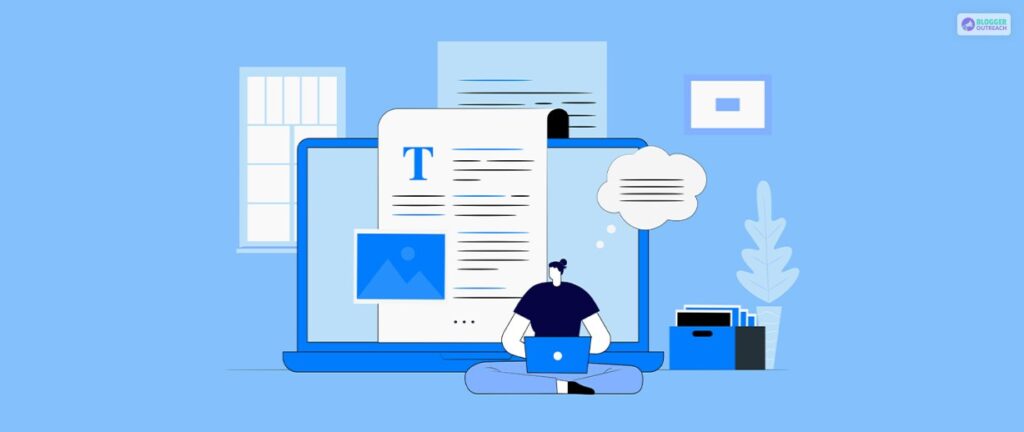
You need to understand what makes your content more visible to reach a wider audience.
Here are some tips to help you optimize your blog for search engines.
(i) Keyword-Optimization
Make sure to include the keywords in your titles, headings, and throughout the body of your content. This will help search engines understand what your post is about and make it easier for them to index it.
(ii) Use Internal Links
Internal links are links from one page on your blog to another page on your blog. This helps search engines understand the structure of your blog and makes it easier for them to index your content.
(iii) Optimize Your Images
Images can help make your blog posts more engaging, but they can also help with SEO. Include keywords in the image file name and use the “alt” attribute to describe the image.
(iv) Optimize Your Meta Tags
When optimizing your meta tags, it’s important to use relevant keywords that accurately describe your website. It’s also important to keep your meta tags up to date. As your website changes, so should your meta tags.
For meta descriptions, keep them under 160 characters, and make them precise. Refrain from creating duplicate meta descriptions and always meet the search intent.
Step 10 – Promoting Your Blog

Promoting your blog is important to growing your audience and gaining more readers.
Here are some tips to help you promote your blog and get more readers.
(i) Utilize Social Media
Post links to your blog on your social media accounts, and use hashtags to help people find your content. You can also join relevant groups and share your blog posts with them.
(ii) Leverage Influencers
Influencers can be a great way to get more eyes on your blog. Reach out to influencers in your niche and ask them to share your blog posts with their followers.
(iii) Create Engaging Content
Creating content that is interesting and engaging is key to getting more readers. Make sure your content is well-written and relevant to your audience. Embed visuals, such as images, infographics, and videos, and make your content more engaging.
(iv) Optimize For SEO
SEO is an important part of promoting your blog. Ensure you use keywords in your content and optimize your titles and meta descriptions. This will help your blog posts rank higher in search engine results, which will help you get more readers.
(v) Use Email Marketing
Email marketing is a great way to promote your blog and keep your readers engaged. You can send newsletters with links to your blog posts or use automated emails to send out new content.
Over To You!
“How to create a blog”
This question is something we get in our email box. And this article provided a ten-step approach to starting your blogging.
Do you still think that blogging is hard to crack?
What if we say that blogging is easy?
It’s easier for those who are ready to put in extra effort, be patient with the process, and be consistent.
Don’t waste your time thinking too much. Take action!
Who knows, one day who become a successful blogger, and people will derive inspiration from you.
Follow the steps and start your blog. We are eager to know your progress.
If you face any challenges in your blogging journey, feel free to let us know.
Read Also:


